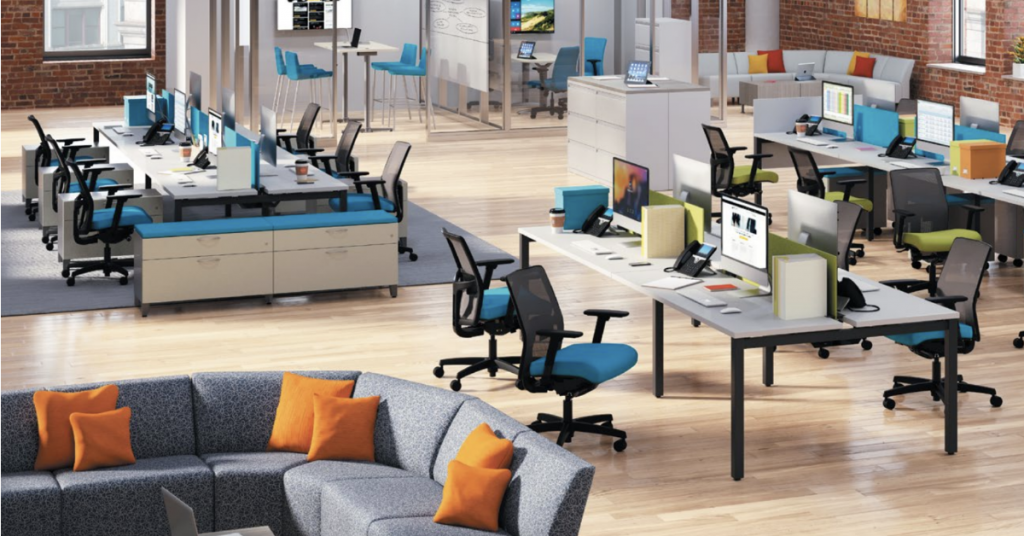In 2021, office furniture trends will be pushing the envelope of creativity and flexibility. In this article we’re going to go over the three trends that we think you can’t live without.
The first trend we’ll be talking about is the rise of hybrid workspaces. In 2021, many people will be working a combination of at home and at the office. So what we’re seeing is the role of the office evolve. So first off, what is a hybrid workspace?
The best way I’ve found to conceptualize it is a reframe in your mind, how you think of an office space.
Many people will be working a combination of at home and at the office in 2021. So we need to focus on creating workplaces that draw people in rather than creating places that we’re going to force people to go to. One way of doing this is to incorporate a wide range of environments within your workspace. Some for focused individual work, others for impromptu brainstorming sessions and yet others still for formally organized meetings.
Next, we need to discover how to make our transition back to the workspace comfortable. Many people have grown accustomed to working from home and won’t want to abandon that more comfortable experience of working with their home office furniture and decor.
Enter the rise of resimercial design. Resimercial or residential commercial is purely the concept of combining residential and commercial design elements.
So you take the comfortable casual atmosphere of home office furniture, and you combine that with the durability and practicality of commercial office furniture. Part of this shift includes creating dedicated lounge areas that people can use for quick breaks and casual conversations, and to have a more living room feel to them than a more traditional formal staff lounge.
Ultimately though, what this is all about is finding a way to combine the best aspects of the workspace and the home space. Expect to see movable and modular office furniture continue to grow as a trend in 2021. Quickly adaptable workspaces are a must for the modern office because they allow for flexibility.
First up, let’s take a look at movable office furniture. Why is this trend on an uptick? Because people have recognized that quick impromptu meetings between just two or three people can be as productive if not more productive, as formally scheduled meetings with larger groups of people.
However, these kinds of meetings need easily accessible areas to hold them and not have to wait on the of a large board or meeting room. Its primary purpose is to allow you reconfigure it inexpensively and on-demand as your organization grows and your needs evolve.
Panel-based systems furniture workstations are an excellent example of modular furniture. Professional furniture installers can reconfigure these workstations quickly and easily with little to no mess or waste. Both consumers and potential employees are demanding that business owners find ways to ensure that their office spaces promote sustainability and eco responsibility.
One great way to improve the sustainability of your workspace is to look for eco-friendly materials when buying new office furniture. Ask your potential suppliers about eco-friendly initiatives. Some have really started to up their game.
Just asking your furniture representative what their brand does for the environment is a great place to start. Another sub trend we’ve been watching is biophilic design. Biophilic design is an effort to reconnect nature with our modern life indoors by bringing nature indoors.
Promise is that people have spent millions of years in natural spaces. So they have a pre pronounced impact on our psychological well-being. An obvious example of biophilic design is the surging popularity of green walls or living walls.
They’re just panels of plants that are grown vertically on structures that are either freestanding or attached to physical walls. A simpler method is to just incorporate more living potted plants and trees into your work area. And to ensure that your team has workstations near a window with a view of the outdoors.
Addition of plants to the workspace has several benefits. First, it improves the air quality by increasing the amount of oxygen being produced. Second, many studies have shown that just seeing a plant or a view of the outdoors helps to reduce stress and improve creative thinking.


